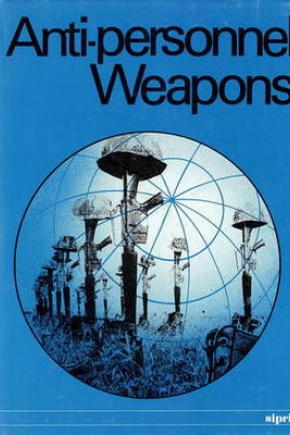Anti-personnel Weapons
'New and terrible methods of destruction are invented daily, with perseverance worthy of a better object, and ... inventors of these instruments of destruction are applauded and encouraged in most of the great European States, which are engaged in an armament race ... Why could not advantage be taken of a time of relative calm and quiet to investigate and try to solve a question of such immense and world-wide importance?'
(Henri Dunant, founder of the Red Cross, 1862)
More than one hundred years have passed since Henri Dunant issued his call for an organization to alleviate the suffering of the wounded on the battlefield. Under the auspices of the International Committee of the Red Cross, which Dunant helped to found, the legal obligations upon combatants to care for the wounded, prisoners and civilians have been successively extended. There can be little doubt that the greatest contribution to alleviating the suffering of soldiers and civilians would come from prohibiting or restricting the use of the more inhumane and indiscriminate means and methods of warfare. At the United Nations—as well as during the course of recent negotiations to modernize the Geneva Conventions—attention has been drawn to the devastating effects of modern conventional weapons, such as high-velocity small arms, cluster bombs, scatterable mines and fuel-air explosives. Proposals to prohibit or restrict the use of some of these weapons have been put forward. But military considerations are all too often given precedence over humanitarian concerns. This book provides the historical, military, technical and clinical background to the present international legal discussions of specific anti-personnel weapons. It provides the facts not only for the diplomat engaged in negotiations or in preparing a brief for his government but also for international organizations, peace groups and concerned citizens. Perhaps by the combined efforts of all these groups the horrors of war can be alleviated.
1. The rise of anti-personnel weapons, from antiquity to 1900
2. The rise of anti-personnel weapons, from World War I to the Viet Nam War
3. Projectile wounds and wound ballistics
4. Small arms and ammunitions
Appendix 4A. Principal manufacturers of military small arms
5. Fragmentation weapons
6. Blast and blast weapons
7. Delayed-action weapons
8. Electric, acoustic and electromagnetic-wave weapons
9. The development of the laws of war on anti-personnel weapons
Appendix 9A. Chronology of events related to the prohibition of inhumane and indiscriminate weapons, April 1968-December 1977
Appendix 9B. Resolutions of the UN General Assembly on inhumane and indiscriminate weapons and related topics
Appendix 9C. A review of recent developments related to the prohibition of inhumane and indiscriminate weapons
Appendix 9D. The US Rules of Engagement in Viet Nam as they relate to certain specific weapons: a brief survey and analysis

